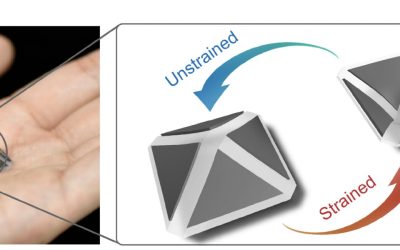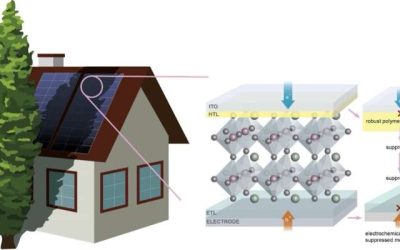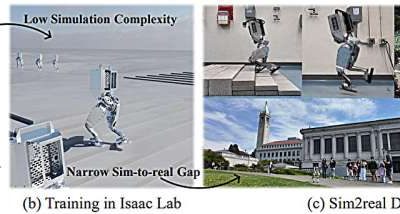Wind turbines and photovoltaics (PVs) are becoming increasingly widespread worldwide, which could contribute to reducing air pollution caused by fossil fuel emissions. To produce energy, however, these renewable energy solutions rely on specific weather conditions...
Engineering
Simplified octopus-inspired swimming robot with soft asymmetric arms can replicate swimming patterns
Researchers at the National University of Singapore have developed a new robot inspired by one of the most intelligent aquatic animals on Earth: the octopus. This robot, presented in a paper published on the arXiv pre-print server, could be used...
Novel liquid acoustic sensor mimics whale melon to recognize voices in noisy environments
In recent years, engineers have developed a wide range of increasingly sophisticated sensors for robotic, portable, wearable and even implantable monitoring. The data collected by these sensors can then be analyzed using state-of-the-art machine learning, allowing...
Soft robotic shorts could assist older adults and people with limited mobility while walking
Recent technological advances have opened new valuable opportunities for assisting senior adults and individuals with physical disabilities. For instance, they have enabled the development of new interactive systems designed that can assist users with everyday...
Ultrathin organic-inorganic device shows promise for wireless monitoring of biomarkers
In recent years, electronics engineers have developed a wide range of wearable and implantable devices that can detect and record biological signals. These devices can help to keep track of various physiological processes, such as heart rate, arterial pulse, sleep...
Magnetically driven soft robot achieves high-speed jumping
Many animal species, ranging from insects to amphibians and fish, use jumping as a means of moving within their surrounding environment. Jumping can be very advantageous for these animals, for instance, allowing them to reach higher branches of trees, swiftly escape...
Researchers develop scalable approach to integrate ultrafast 2D flash memories
The widespread use of artificial intelligence (AI) tools designed to process large amounts of data has increased the need for better performing memory devices. The data storage solutions that could help to meet the computational demands of AI include so-called...
Self-sensing cantilever design enhances microelectromechanical system performance in challenging environments
Microelectromechanical systems (MEMS) are tiny devices that integrate various components, such as miniature sensors, electronics and actuators, onto a single chip. These small devices have proved highly promising for precisely detecting biological signals,...
Engineering approach can improve stability of perovskite solar cells under reverse bias conditions
Solar cells based on perovskites, a versatile class of materials with promising optoelectronic properties, are gradually making their way toward commercialization. While these solar cells can have notable advantages over existing solar cell designs, including higher...
Researchers develop a new humanoid platform for robotics research
Advancements in the field of robotics are fueled by research, which in turn heavily relies on effective platforms to test algorithms for robot control and navigation. While numerous robotics platforms have been developed over the past decades, most of them have...









